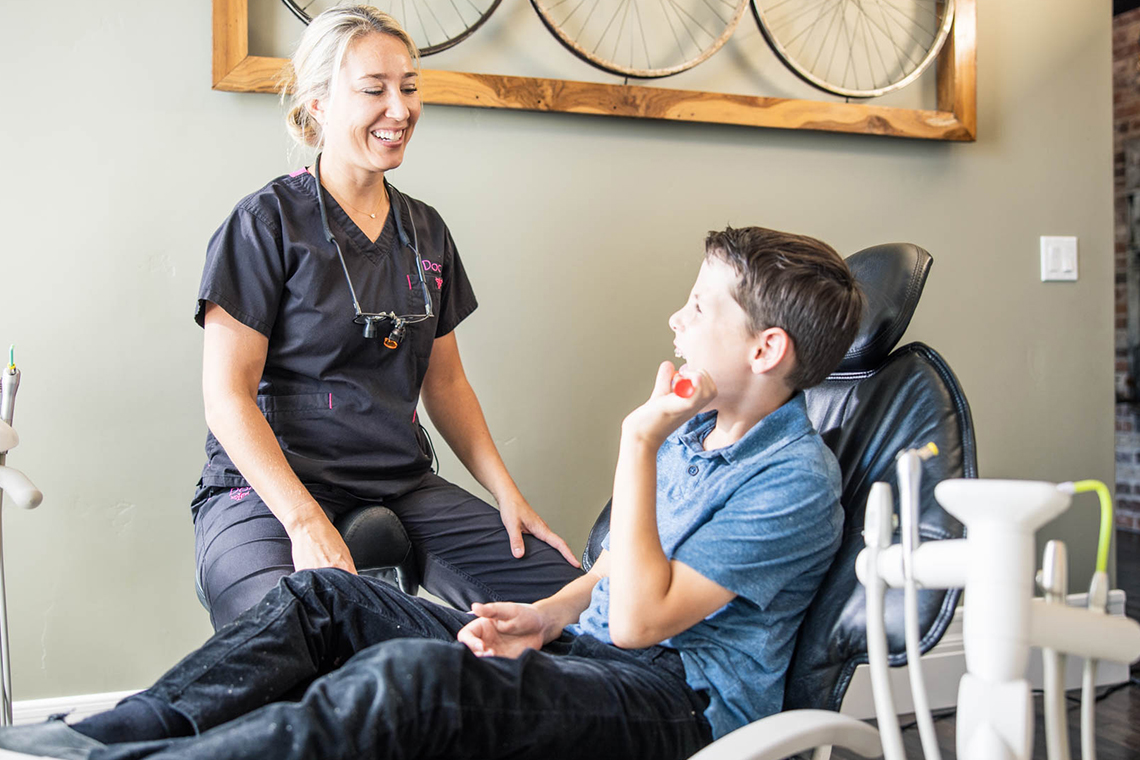Pediatric Dentistry
Caring for the Most Precious Members of Your Family
One of the most common questions from parents is when should their child first see the dentist? The answer is children should start seeing the dentist after the eruption of their first tooth or after they turn one, whichever comes first. Good oral hygiene starts at home by making teeth brushing a fun part of your normal routine.
Pediatric dental exams are vital to the overall health and maturity of your child’s teeth. At Floss, we review the child’s overall health history to determine the best course of oral treatment, whether that is routine cleanings, x-rays and check-ups, or creating treatment plans for more advanced care due to genetics or a pre-existing condition. Each child is treated individually to ensure ultimate success as they grow and to create an experience that is pleasing and comforting.
Each pediatric examination will note the health and condition of the teeth, gums, soft tissues, head and neck. Dr. Holloway also monitors the growth of the jaws and development of the teeth, and evaluates any oral habits, such as thumb sucking, teeth grinding or potential airway constriction due to enlarged tonsils. All these inputs will help inform a diagnosis and create a custom treatment plan and instructions for dental health at home.

Common Procedures for Pediatric Dentistry
X-rays
Children generally need x-rays more often than adults since their mouths grow and change so quickly. They are also more susceptible to tooth decay. Pediatric dentists can use x-rays to survey erupting teeth, diagnose bone diseases, analyze the extent of an oral injury, or plan orthodontic treatment. Pediatric x-rays allow Dr. K to diagnose and treat conditions that cannot be visually detected during an oral exam. If dental problems are identified and treated early, dental care will be less invasive and more affordable.
At Floss, we are very careful to minimize the radiation exposure to your child. We use state of the art equipment, lead body aprons and shields help protect the child’s body. Our modern dental equipment is designed to focus the x-ray beam only where needed and filter out unnecessary x-rays. Use of high-speed film and digital x-rays further help minimize radiation exposure.
Panoramic x-rays may sometimes be necessary to view the child’s entire mouth and jaws. It shows any permanent teeth that are missing, abnormal growth, extra teeth or other oral issues. A panoramic is typically scheduled when a child’s 6th year molars erupt and then once every three to five years afterward.
Sealants
Sealants are used to help prevent tooth decay after permanent teeth appear. They are made of clear plastic and are applied to the chewing surface of the tooth. Often there are depressions and grooves in teeth that are difficult for a child to clean. Sealants work to fill in these areas so that brushing is more effective and tooth decay is staved. Application of sealants is quick, painless, and is usually effective for many years if your child practices good oral hygiene and avoids hard candies like jawbreakers.
Tooth Colored Fillings
Tooth colored porcelain fillings are used to enhance or repair the front teeth where appearance is the most noticeable. They are also used to also repair chipped or decayed teeth anywhere in the mouth. Tooth colored fillings are hard to distinguish from the natural tooth color, making them a more seamless solution than caps or traditional silver fillings.
Traditional Crowns
Baby teeth hold the spacing for the permanent teeth and help guide the permanent teeth into position. Baby teeth allow for normal development of the child’s jawbone and muscles. When baby teeth fracture due to decay or trauma and a filling is required on more than one surface of the tooth, Dr. Kleidosty may recommend the placement of a crown over the baby tooth instead of a filling. A crown is more durable than a filling, and should last until the child’s adult teeth come in. In many cases the crown results in less expense to the parent and less trauma to the child.
If a crown is required, Dr. K will generally elect for stainless steel crowns for back teeth and NuSmile crowns on front, visible teeth. Stainless steel crowns are silver colored caps that cover the whole tooth. Stainless steel crowns are is the most durable, and last until the baby tooth falls out. NuSmile crowns are stainless steel but with a tooth colored coating the front. This option is ideal for restoring baby teeth in the front where parents are concerned with cosmetic appearance of their child. However, hard foods must be avoided since the tooth colored coating can chip off.
Strip Crown
This option is created using a clear shell that is filled with tooth-colored material and fitted over the tooth. A light is applied to cure the material, then the outer clear shell is removed, leaving the tooth colored material. Although this restoration is the most cosmetically pleasing option, it is also the most fragile. Strip crowns are only feasible if there is enough natural tooth structure left once all decay has been removed and prepped for crown placement.
Pedo-Jacket Crown
This restoration is white plastic shell that is filled with tooth colored filling material and fitted over the tooth. A curing light is then applied to the restoration. Unlike a strip crown, this shell is left in place.
Pulp Treatment
Endodontic or root canal treatment focuses on the pulp of the tooth. The pulp contains nerves and blood vessels that supply nutrients and oxygen to the tooth. When the pulp gets infected or injured, endodontic treatment is performed in order to save the tooth. During treatment, the hollow area inside the tooth is cleaned, disinfected and filled.
When the pulp has been injured by trauma, decay or other causes, endodontic treatment is usually the best way to try to save the tooth. Unless a child’s tooth is about to fall out, a dentist may recommend endodontic treatment on a child’s primary (baby) tooth. Without treatment, the child will experience pain or discomfort, and infection may result. Early extraction of the primary tooth is usually not advisable because primary teeth are necessary for chewing and for learning proper pronunciation during language development. Also if a baby tooth is extracted too early, neighboring teeth can shift and occupy some of the vacant space making it difficult for the permanent tooth to grow in properly.
Symptoms that indicate a need for endodontic treatment can include toothache, sensitivity to hot and cold, or if the pulp has been exposed from fracture and the child is experiencing sensitivity.
Extractions
Whenever possible, dentists try to preserve the natural baby tooth when treating for decay or damage. Primary teeth or “baby teeth” play an important role in a child’s life for proper chewing, speaking and speech development. Primary teeth also maintain proper spacing for the permanent teeth and help guide the permanent teeth when they cut through the gums.
However, there are times when it is necessary to remove a baby tooth. Extraction of a tooth may be necessary in the following situations:
- The tooth is too damaged or decayed to be restored
- The tooth fails to loosen and fall out on its own and blocks the adult tooth from emerging
- Teeth need to be removed due to crowding or for orthodontic purposes
- Impacted or unerupted wisdom teeth
Once a tooth has been removed, neighboring teeth may start to shift, resulting in problems with spacing, growth, and development. To avoid these problems, Dr. K may place a space maintainer.
Space Maintainers
Space maintainers are necessary when a primary tooth has been lost prematurely. A space maintainer holds open the gap where the permanent tooth will come in, and avoids the shifting of the neighboring teeth. Space maintainers can be fixed or removable, and they can be fixed only to one side of the mouth or both sides of the mouth, depending on need and age. For younger patients, fixed space maintainers are usually recommended.
Nitrous Oxide
Also known as laughing gas, nitrous oxide is a type of sedation that can be administered when a child is scared and not able to relax. It is also used with patients who have sensitive gag reflexes.
Conscious Sedation
Conscious sedation medications are available for children who need help relaxing at the dental office. Conscious sedation is sometimes needed for those children who are anxious during appointments. Conscious sedation helps increase cooperation and reduces anxiety and discomfort during dental procedures.

